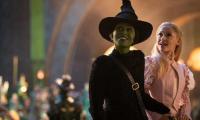Years ago, in a Brooklyn writers’ workshop of largely African Americans, one member woefully explains the thwarted plot of her novel in progress: – how, despite her effort to feature a Black hero: “By the second chapter, I had killed him off”.
That Black character, even in her imagination, was irretrievably doomed; in a fictional scenario she still can’t rescue a Brother from his overriding Black American destiny.
My memory of that dilemma becomes personal as I review more and more books authored by American Muslims. These writers may find themselves in a similar quandary, namely how to overcome, in our case, the established Muslim terror scenario, and re-imagine our heroes.
Forty years ago, our history included no 911 attacks, no American assaults on Middle East nations, and only a handful of Muslim mosques. Most of us originating from those yet-to-be-targeted lands were not ‘Muslims’ then; we were simply immigrants – Arab, Turkish, Iranian – trying our best to pass unnoticed.
How fellow Americans view Arabs and how we perceive ourselves under their gaze has dramatically changed these past decades. Today, while scanning the range of our literary output, I wonder: will we ever break through our fraught and stereotyped identities?
Racist-based school bullying of our children, endless wars in our homelands, misconceptions of our faith, alarming news headlines and pressures from our overriding culture are so insistent, we feel compelled, even through art, to explain ourselves in terms of the smothering American framework.
Muslim writers are caught in this net. Honing our artistic skills and determined to speak for ourselves, we are turning to fiction, devising new themes and redefining our heroes. Still, unceasing references to terror threats and pressure to explain or defend our faith worm their way into novels, even by writers only faintly Muslim.
Afaf Rahman is the heroine in The Beauty of Your Face, a first novel by Chicago-based writer Sahar Mustafah. We’re just introduced to challenges Rahman faces as headmistress of Nurrideen School for Girls when a crisis explodes:– the school is under armed siege. But we barely detect the attack when the author abruptly transports us back when Afaf was 10 and one of three children in a family of struggling Arab immigrants. Alienated from the surrounding American culture, the Rahmans are adrift with no cultural or religious bonds to anchor them.
Nada the oldest child has run away leaving Afaf and her brother to muddle on, their fate complicated by an embittered mother and an inattentive, discomfited father. We follow Afaf through her teenage years, aimless and friendless, incapable of dealing with bullying classmates and the disdain of teachers. How this floundering child stumbles through a tangle of impediments becomes the core of the novel.
Excerpted from: 'Muslim Heroines Find their Way into New American Literature'.
Counterpunch.org
Report assesses readiness of over 190 countries to meet demands of the international job market
In Pakistan, prospect of introducing Starlink has been topic of discussion, particularly due to frequent internet...
Experts and stakeholders contend that privatisation could effectively address persistent inefficiencies
While it augurs well that need for regulation is being recognised and implemented
Disturbances that began in 2023 with attack on school have escalated rapidly in recent weeks
Obvious ineptness and lack of empathy that underpins our criminal justice system need not be recounted







